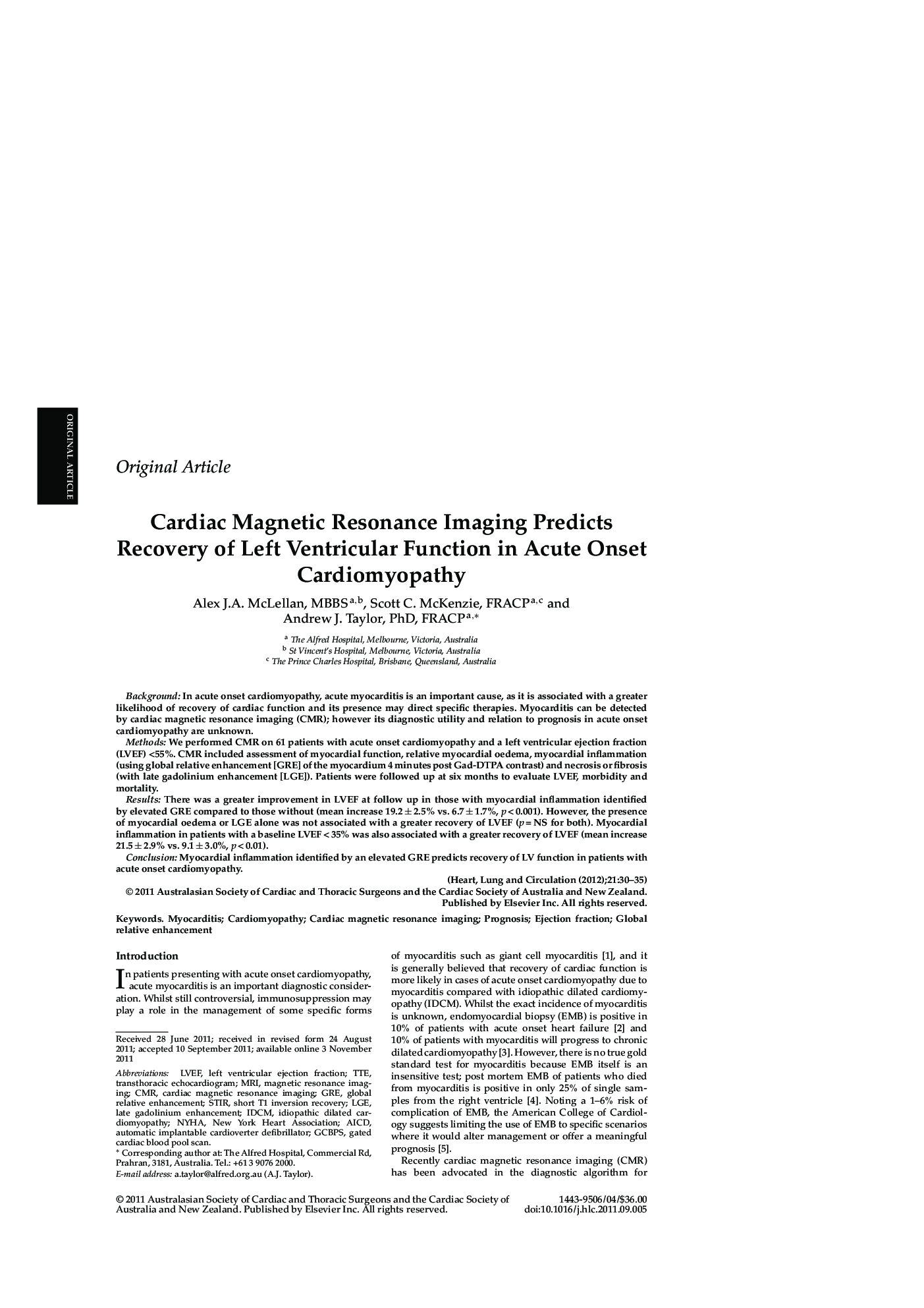| Article ID | Journal | Published Year | Pages | File Type |
|---|---|---|---|---|
| 2918131 | Heart, Lung and Circulation | 2012 | 6 Pages |
BackgroundIn acute onset cardiomyopathy, acute myocarditis is an important cause, as it is associated with a greater likelihood of recovery of cardiac function and its presence may direct specific therapies. Myocarditis can be detected by cardiac magnetic resonance imaging (CMR); however its diagnostic utility and relation to prognosis in acute onset cardiomyopathy are unknown.MethodsWe performed CMR on 61 patients with acute onset cardiomyopathy and a left ventricular ejection fraction (LVEF) <55%. CMR included assessment of myocardial function, relative myocardial oedema, myocardial inflammation (using global relative enhancement [GRE] of the myocardium 4 minutes post Gad-DTPA contrast) and necrosis or fibrosis (with late gadolinium enhancement [LGE]). Patients were followed up at six months to evaluate LVEF, morbidity and mortality.ResultsThere was a greater improvement in LVEF at follow up in those with myocardial inflammation identified by elevated GRE compared to those without (mean increase 19.2 ± 2.5% vs. 6.7 ± 1.7%, p < 0.001). However, the presence of myocardial oedema or LGE alone was not associated with a greater recovery of LVEF (p = NS for both). Myocardial inflammation in patients with a baseline LVEF < 35% was also associated with a greater recovery of LVEF (mean increase 21.5 ± 2.9% vs. 9.1 ± 3.0%, p < 0.01).ConclusionMyocardial inflammation identified by an elevated GRE predicts recovery of LV function in patients with acute onset cardiomyopathy.
